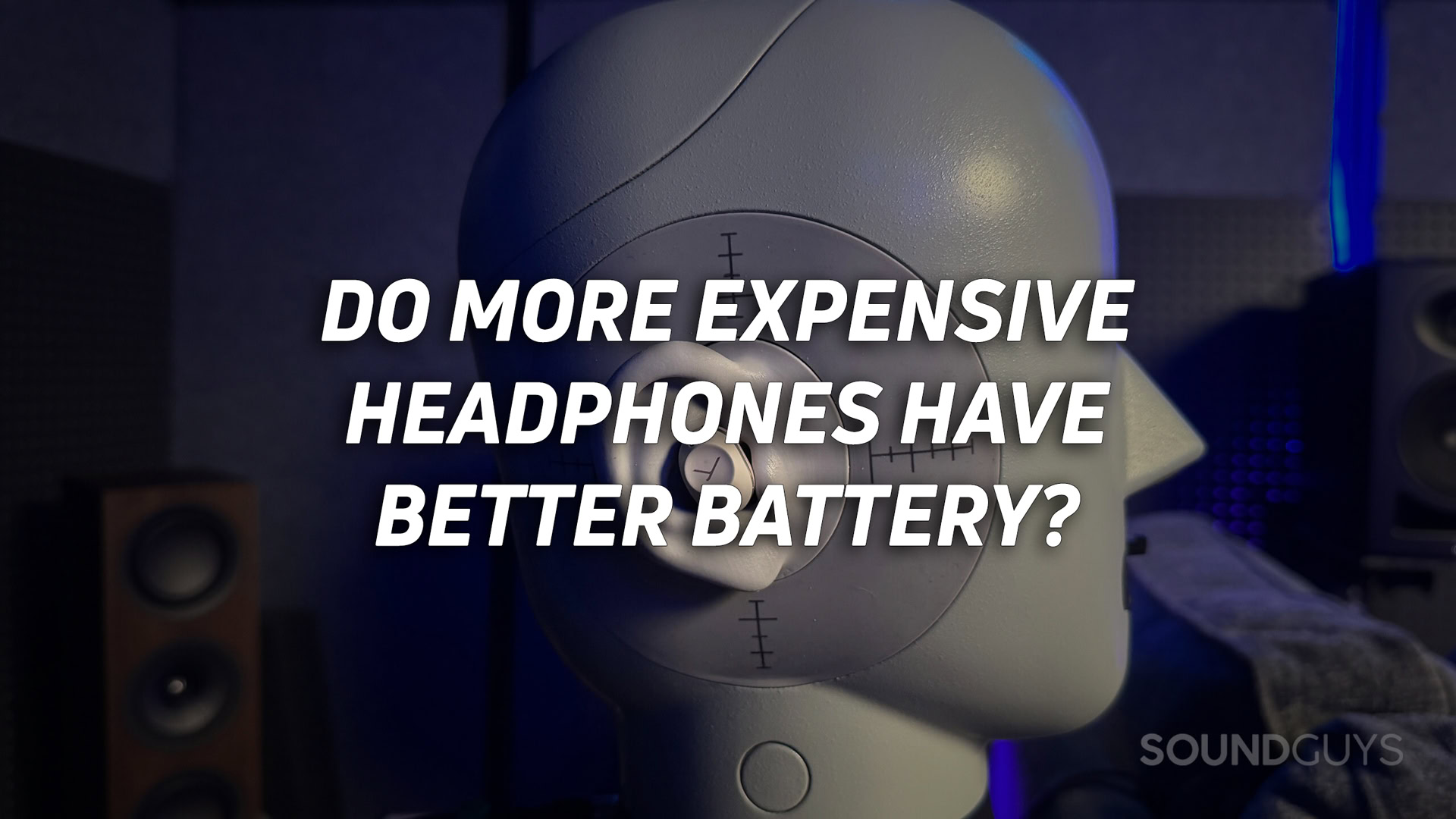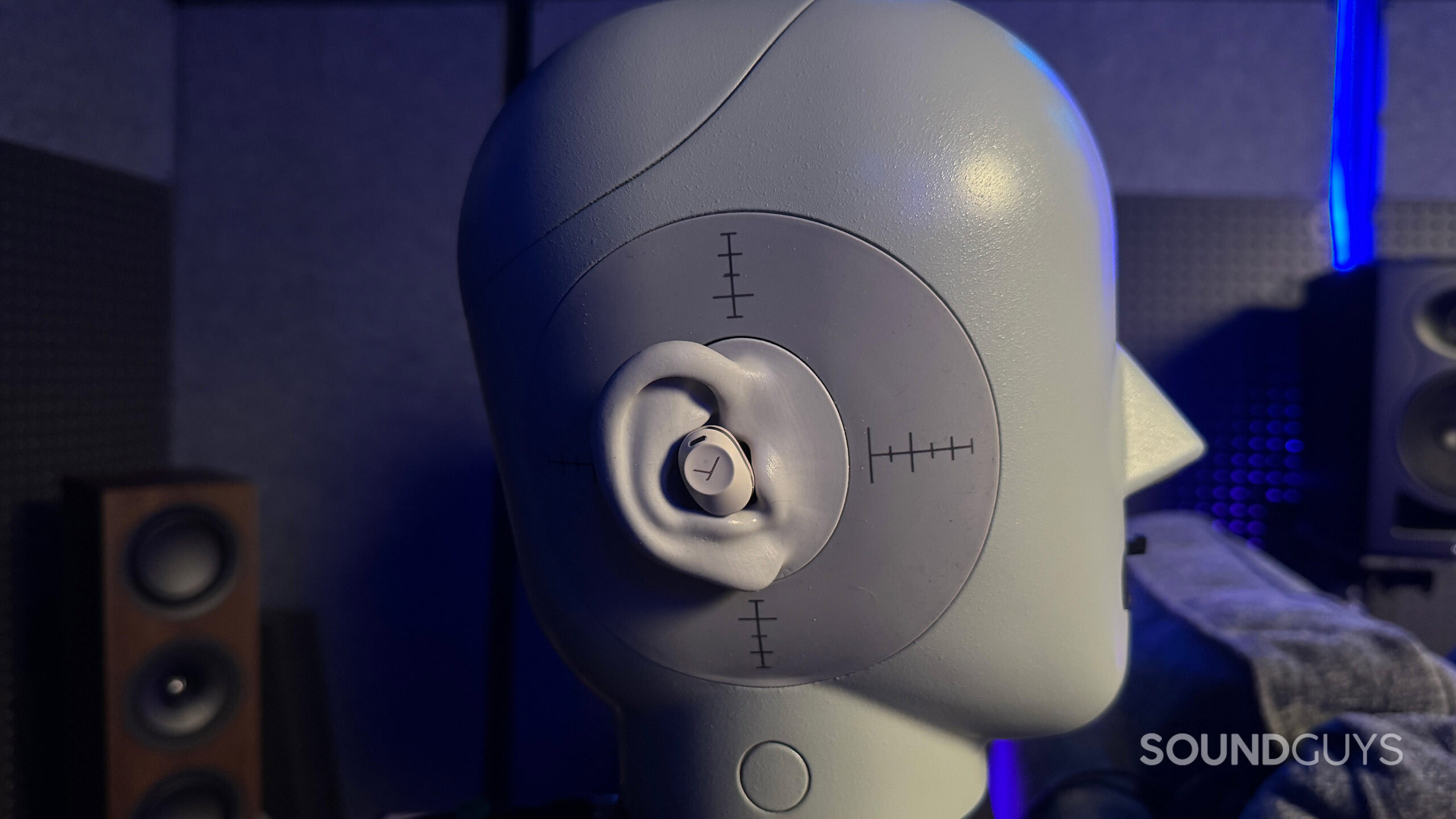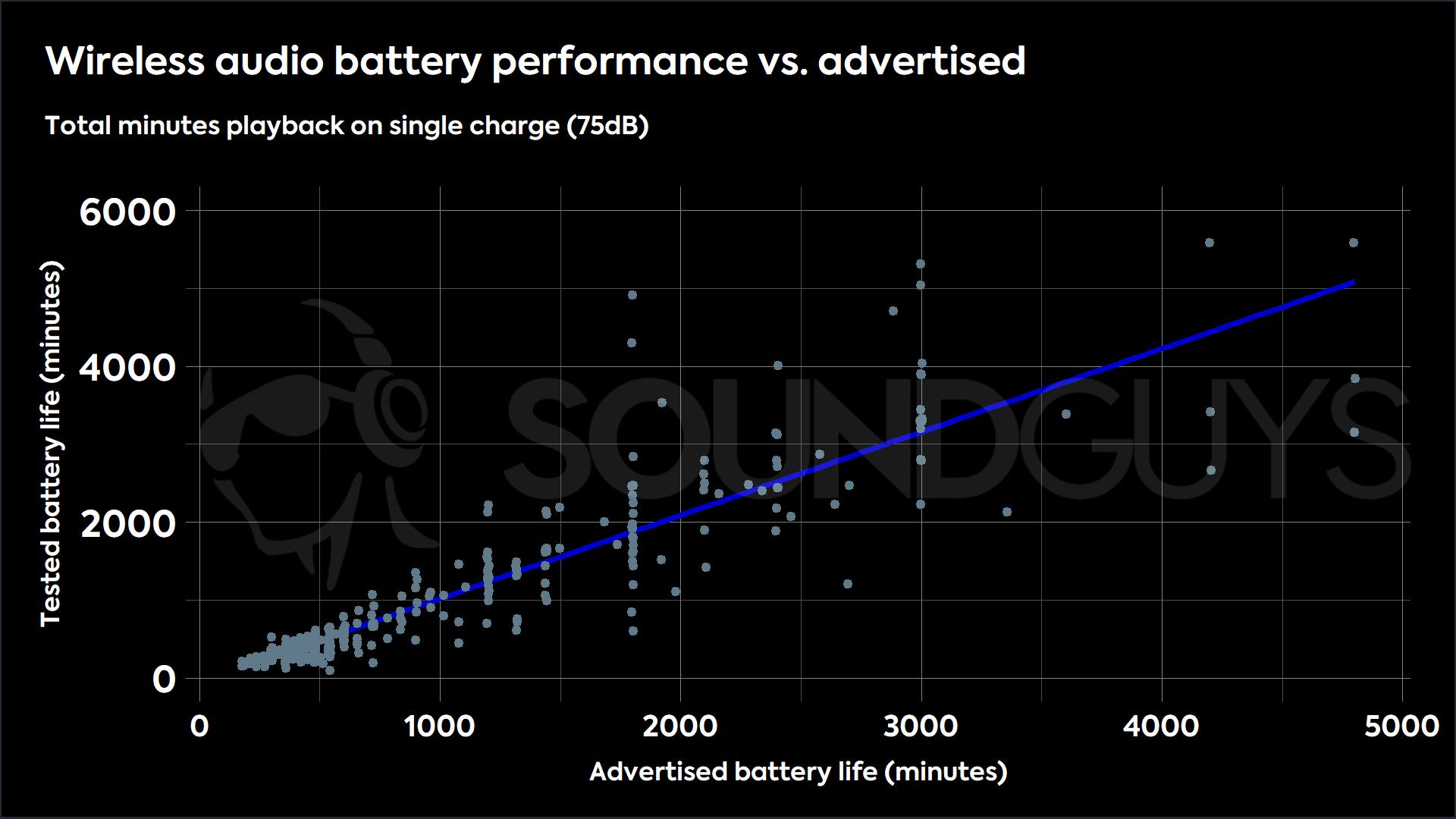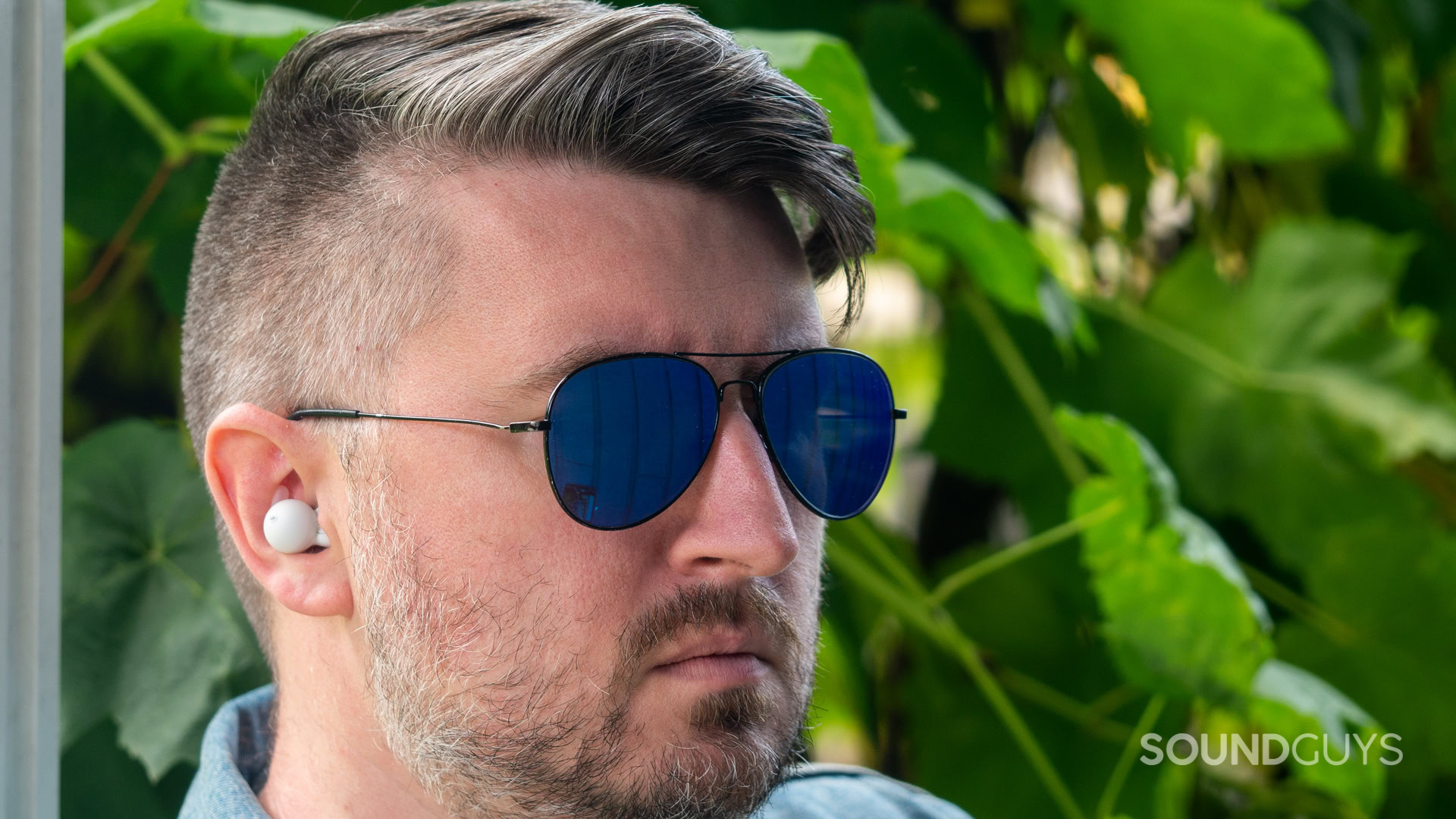All products featured are independently chosen by us. However, SoundGuys may receive a commission on orders placed through its retail links. See our ethics statement.
Do headphone manufacturers lie about battery life? We tested hundreds of products
July 1, 2025

Nobody likes buyer’s remorse, and people getting burned by spending too much on products that perform like crap is the reason why reviewers even have jobs in the first place. So how do you avoid that? How can you know if what you’re getting has a good battery life? You may be tempted to assume that advertising material can be trusted, or that spending more equals getting more. But what does the objective data say?
How we test battery life

Our battery test is rather simple. For each set of wireless headphones, earbuds, or other personal audio product, we:
- Level-match the headphones using a test signal and fixture to measure the output.
- Play back a sample track containing real music, peaking at 75dB(SPL); a reasonable listening level for most people.
- We record the headphones’ output, so we can see exactly how long the device can play music.
- In the cases where one earbud lasts longer than the other, we use the shorter battery life.
When we come into the office the next morning (or in the case of ANC headphones, the next Monday), we look at the waveform, and record the runtime in minutes. We subject every product to conditions that are as identical as possible to be able to show people what they can expect to get out of their products. It’s very likely that you’ll find that our figures don’t match your experience because battery life can vary based on listening volume, features used, device age, and so on. We’re mainly looking for ballpark figures that can be directly compared to each other.

While we could publish the size of the battery itself in every product, it’s often extremely difficult to find the listed capacity of the cells online. Additionally, most people aren’t going to be able to translate what a string of numbers ahead of “mAh” is going to mean for battery life, so testing battery life is a little easier to understand. Just know that you can likely extend your battery life beyond what we found, and there might be things that cause your products to not last as long. It doesn’t make our figures “wrong,” just “not applicable in all situations.”
What we found
After testing for years, we have a decent corpus of data that can be plotted to plot out trends.
Battery life is generally in the ballpark of what’s advertised
By taking advertised battery life and comparing it to what we found in our lab, we’re hoping to see data that has a strong correlation and low variance. Ideally, a line fitting this data would have a slope of 1, showing us that what we collected in the lab and what is advertised is very close to reality. That’s not quite what happened.
On the whole, you can most often trust the battery life figures on the box to be somewhat realistic.
Because advertised battery life figures aren’t always in a place that’s easy to get, we had to trim down a bit to 281 products for this particular exploration. We found that wireless earbuds, in particular, would often use different test conditions than what we do. For example:
- Some products will advertise figures with the ANC off, while we test with the ANC on whenever possible.
- Some companies will test their headphones at 50% volume, where we level match to the same output level for every product instead.
We knew going into this that there would be a level of variability that’d be tough to explain in certain instances. Because many manufacturers’ claims center around a certain number of hours, there’s a fair bit of clustering on that axis in 60-minute increments. Let’s take a look:

As expected, there is a correlation between our tested data and advertised battery life, so that’s good. As the adjusted R2 value for our regression is .824, it’s acceptable to say that the variance between advertised battery life and tested battery life is more or less predictable — despite the being a little on the high side. Most products tend to be relatively close to their advertised figures, but a handful of pretty significant outliers could easily be explained by changing the conditions you test in. However, that slope being 1.07 means that most products test very slightly better than advertised, which is interesting. But just because a trend exists doesn’t mean that any one product will adhere to said trend — we’re looking at a large pool of headphones, so what’s true in general won’t be true for everything.
I also had to omit some gaming headsets, as there are a couple with rather extreme battery life figures. For example, the HyperX Cloud Alpha Wireless Gaming Headset is impossibly unfair to the rest of the pack here, at 327+ hours of playback. Because its advertised battery life of 300 hours is so huge, the difference in minutes was enormous, even though it only overshot its advertised battery life by 9%.
There’s little relationship between price and battery life performance
When the scores of all 415 devices are plotted against price, we see an interesting thing: a slight positive relationship, but a very weak one at that. Price alone does not predict battery life. The best way we’ve found to guarantee you get good battery life is by buying a product with a larger cell — specifically over-ear or on-ear headphones.
If you buy headphones, the average battery life is somewhere in the ballpark of 35 hours. Wireless earbuds tend to withstand our test for “only” about 6.4 hours on average. Neither is bad, and even the lower figure for wireless earbuds exceeds what our readers and Gen Z, specifically, listen to in a given day by about 38%. But your use case will dictate which product will work better for you. It’s worth noting that it’s likely that over and on-ear headphones will also remain operational for longer than wireless earbuds, owing to inherent tradeoffs with smaller battery cells.
It’s very clear that performance is quite good among wireless headphones and gaming headsets as a rule, and you aren’t likely going to get a starkly noticeable performance improvement from merely spending more. If you need your product to last more than 8 hours on a single charge, you should be looking at over-ears or on-ears.
What you should do
If you wonder what any of this means for you: it’s that you really can’t just trust that the expensive headphones on the shelf will grant you improved performance based on the price alone, nor will the advertised battery life always line up perfectly with your use. However, it’s clear that manufacturers don’t just pull a number out of… a hat… to report, nor do they typically exaggerate their performance very much. It’s far more likely that results that don’t match real-world performance were simply tested differently.

But in order to tell if a specific product would work well for you: You need insufferable nerds like us to test the claims of manufacturers to help you sort which headphones perform to your needs — and which ones don’t. After all, it’s our day job to make sure you get what you need.
Thank you for being part of our community. Read our Comment Policy before posting.